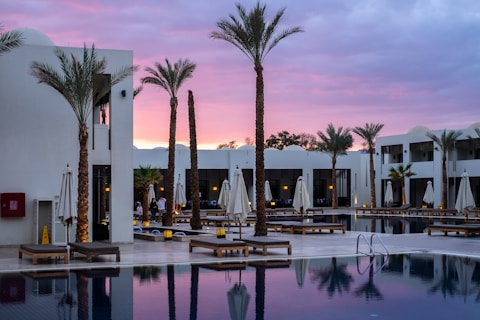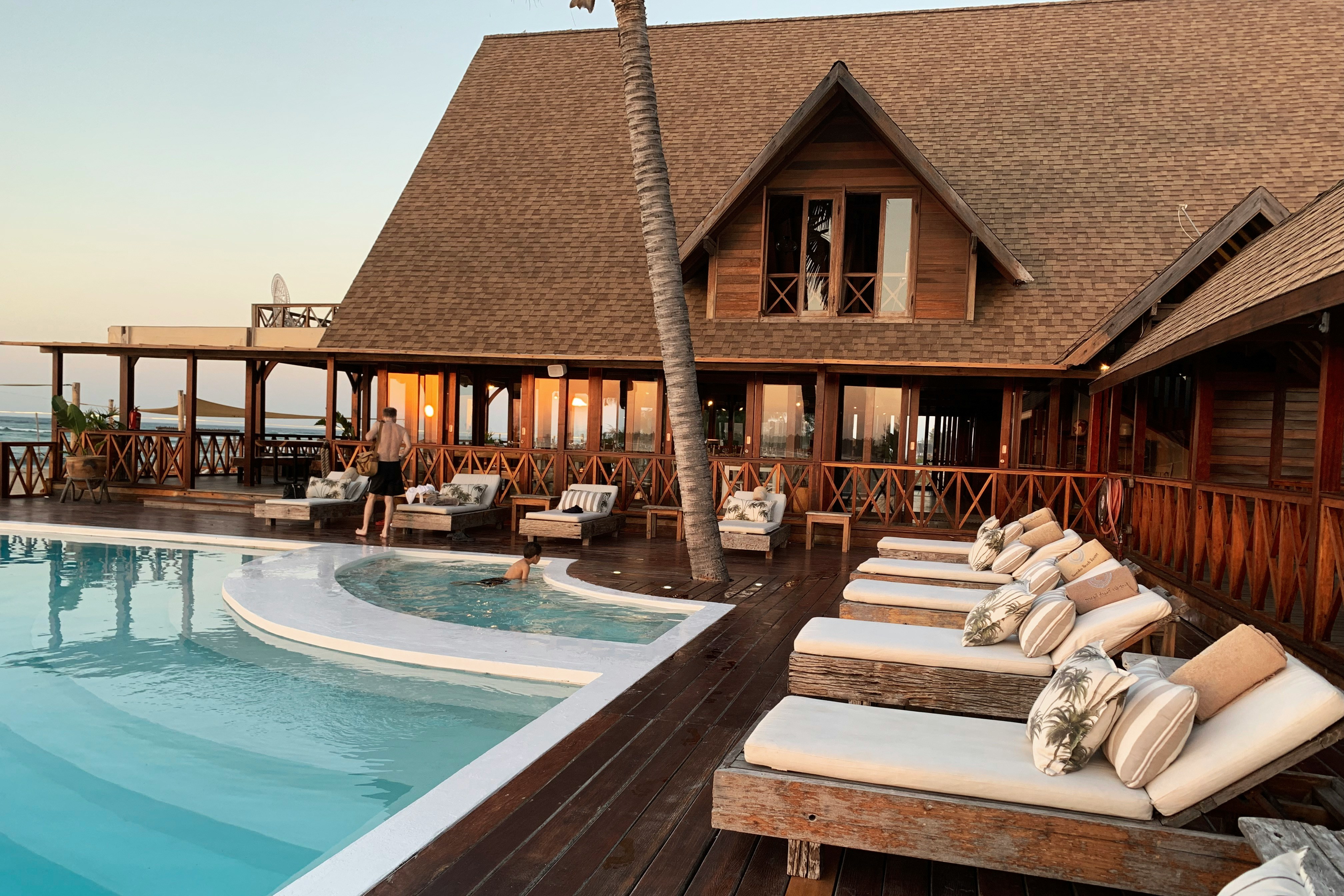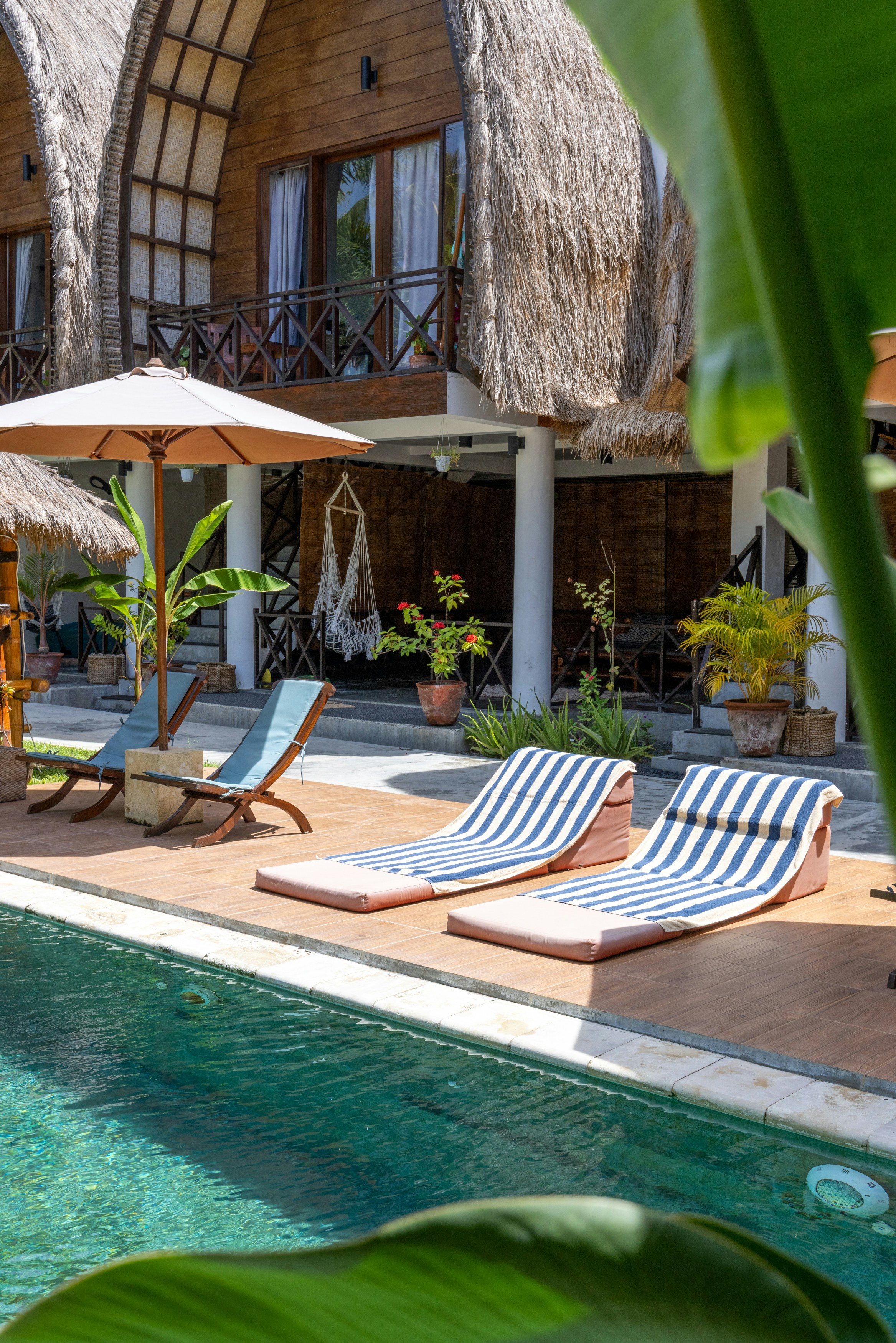Qutub Minar
Qutub Minar things to do, attractions, restaurants, events info and trip planning
Description
Ratings
Plan your stay
Posts
🕓 Timings: Open all days of the week 7:00 AM to 8:00 PM 🎟️ Entry Fee: Indian Citizens: ₹40 Foreigners: ₹600 Children (up to 15 years): Free 📌 Book the ticket for this place in advance before reaching the place, as the internet absolutely doesn't work there. Book the tickets online from the Archaeological Survey of India's official website, as the ticket counter is always super crowded! And tickets are a little cheaper in online mode. 🚇 Nearest Metro Station: Qutub Minar (Yellow Line) 1.5 Km from Qutub Minar metro station. 📸 Photography and Videography: Allowed ♿ Accessibility: Certain areas are accessible to specially-abled persons. 🚻 Washrooms: Separate washrooms for ladies and gents. Toilets are accessible to specially-abled persons.♿ 🚰 Drinking Water: Drinking water is available inside the premises. 🅿️ Parking: Parking space for cars and two-wheelers is available near the entrance. 🚫 Restrictions: Bringing food items and pet animals is not allowed.🍱🐶 Smoking and drinking alcohol is not allowed inside the premises. Qutub Minar is one of the most iconic historical monuments in Delhi and a UNESCO World Heritage Site. Standing tall at 73 meters, this magnificent minaret was constructed in 1193 by Qutb-ud-din Aibak and later completed by his successors. The intricate carvings and detailed inscriptions in Arabic along the red sandstone structure are a testament to the exquisite craftsmanship of the era. Before entering the main complex, security checks are conducted to ensure the safety of all visitors. Once inside, you can explore the various architectural marvels at your own pace. The information plaques near each structure provide valuable insights into their historical and cultural significance.👮 The minaret is surrounded by several other historically significant structures, including the Quwwat-ul-Islam Mosque, the first mosque to be built in India, and the Iron Pillar of Delhi, famous for its rust-resistant composition. My visit to Qutub Minar was an enriching experience. I visited this place with my friend and enjoyed it to the fullest. We also explored the place during the daytime and the evening. Qutub Minar looks absolutely stunning in the evening! As the sun sets, they flash lights over the Qutub Minar, and it looks breathtaking. So, Qutub Minar is a place that should be visited during the day and in the late evening. You must witness this beauty in the evening as well. The towering minaret set against the backdrop of a clear blue sky is a sight to behold. As you walk through the complex, you can feel the rich history emanating from every corner. The lush gardens around the monument provide a serene environment for visitors to sit and obserbe the beauty and history of the place.🌳⛅ 📌 Practical Tips: Footwear: Comfortable walking shoes are recommended as the site involves a fair amount of walking. Best Time to Visit: Early morning or late afternoon to avoid the midday heat and to enjoy the site with fewer crowds. Guided Tours: Hiring a guide or using an audio guide can greatly enhance your understanding of the site’s history. Qutub Minar is a family-friendly place, offering educational and fun experiences for visitors of all ages. The spacious gardens provide ample space for kids to play, while adults can appreciate the historical and architectural significance of the site. 🌳🍃 Take out at least 2 hours to entirely explore this beautiful place. ⏳ Overall, Qutub Minar is not just a monument but a gateway to India’s rich past. It’s a must-visit for history enthusiasts, photographers, families, and anyone interested in exploring the cultural heritage of India. Allow yourself at least 2-3 hours to fully explore and appreciate this historical treasure.✨
LokeshLokesh
00
This UNESCO World Heritage Site is the tallest brick Minaret in the world. I believe 🤔no concrete has been use in its construction, stones are simply slotted in. There are around 6 less known monuments within the grounds that surround this marvel. For photographers, you can take in your mobile phones and still cameras, video cameras are not permitted, however you are free to use the video capability of you phone to capture the show, so set it on your highest resolution. I saw this complex after sunset as I was advised that they had spend considerable time creating a light show. I was expecting some form of a multitude of dancing coloured spotlights. Before the show started there seemed to be 2 or 3 attempts to start this show. Between 15 seconds and 1 minute, perhaps this is a trial prequal to the actual show. Find an unintrusive spot to capture this show from, preferable with the least number of people around as where I stood, although initially very sparsely populated, soon filled up. My phone video footage however, is full up unnecessary nonsensical chatter of people in the background when they should simply zip up their oriphises and enjoy the "Projection" spectable in front of them as one expects that is what they came to see. Anyhow, I recorded the spectacle for a tad under 10.5 minutes, file size is 1.05gb. (A monopod with a tiltsble phone mount would be ideal here and save one a backache). I did manage to see bits of the show with my own eyes, that was mesmerising. Look out for the numerous low flying aircraft that seem to virtually kiss the Minaret. Also as it was a clear night, I saw many stars and so went around the Minaret, adjusting my focal length until I was able to line up a star over its right shoulder. Apart from the unnecessary chatter, the show was superb. Well worth the trouble. Take time walking around all the surrounding buildings, very grand and eye catching. In a few places however the spot lights seem to be designed to blind you rather than spot light the monuments. Also be careful when walking, because of some of these spotlights, it somewhat blinds you to the approaching steps along the walkways. Hope you get a nice clear day when it is not raining and you will thoroughly enjoy you visit. I believe there is just the one light show. The approx 10.5 minutes of my Filmed material shows a file capture capture time of 19:10. I assume this is time of year dependant. So best to check the sunset time for the time of year you are going there and be there 15 minutes prior or that so you can locate your ideal viewing/ filing spot. I personally spent 1 hr 15 minutes there, predominantly focused around the Minaret. I would suggest atleast 2+ hours if you want to see the other buildings as this is a very large well maintained complex. Enjoy your outing 🌞ny
Sunil ChopraSunil Chopra
00
The Qutub Minar, Iron Pillar, and the myriad of interior places in Delhi offer an unparalleled experience for history enthusiasts and casual tourists alike. This review aims to provide a comprehensive insight into these remarkable landmarks, highlighting their historical significance, architectural marvels, and the hidden gems that make Delhi a must-visit destination on the internet.The best things to avoid queue of tickets is the purchase the ticket online by scanning the Qr Beginning with the iconic Qutub Minar, standing tall at 73 meters, it is a testament to the rich cultural heritage of India. Constructed in the early 13th century, this red sandstone and marble tower symbolizes the victory of Mohammad Ghori and showcases intricate carvings and verses from the Quran. The adjoining Qutub complex houses several other historical structures, such as the Alai Darwaza, Alai Minar, and the Quwwat-ul-Islam Mosque, making it a must-visit destination for anyone exploring Delhi. The Iron Pillar, located within the Qutub complex, is another marvel of ancient Indian engineering. Dating back to the 4th century, this 7.2-meter tall pillar remains a mystery due to its resistance to rust and corrosion. Inscribed with Sanskrit verses and Gupta dynasty symbols, it represents the harmonious blend of Hindu and Buddhist art forms during that era. Delving into the lesser-known interior places in Delhi, one cannot miss the serene beauty of the Hauz Khas complex, which comprises a historic lake, mosque, and several tombs. The intricate architecture of the tombs, coupled with the lush greenery surrounding the area, provides a peaceful retreat from the bustling city life. Another hidden gem is the Mehrauli Archaeological Park, home to several monuments dating back to the 10th century. The park offers a leisurely walk through history, with highlights such as the Jamali Kamali Mosque and Tomb, and the ancient stepwell, Rajon Ki Baoli. Lastly, the Lodhi Gardens, a sprawling green oasis in the heart of Delhi, is a perfect blend of nature and history. The gardens house tombs and monuments from the Sayyid and Lodhi dynasties, providing a serene atmosphere for relaxation and contemplation. In conclusion, the Qutub Minar, Iron Pillar, and the numerous interior places in Delhi offer an unparalleled experience for travelers. These historical landmarks and hidden gems provide a glimpse into the rich cultural tapestry of India, showcasing the country's architectural prowess, historical significance, and natural beauty. A visit to these sites is a must for anyone looking to explore the depth and breadth of Delhi's fascinating past and present.
Mohd Yusuf KhanMohd Yusuf Khan
20
The Qutb Minar, also spelled Qutub Minar and Qutab Minar, is a minaret and "victory tower" that forms part of the Qutb complex, which lies at the site of Delhi's oldest fortified city, Lal Kot, founded by the Tomar Rajputs. It consists of 399 steps . It is a UNESCO World Heritage Site in the Mehrauli area of South Delhi, India. It is one of the most visited tourist spots in the city, mostly built between 1199 and 1220. It can be compared to the 62-metre all-brick Minaret of Jam in Afghanistan, of c. 1190, which was constructed a decade or so before the probable start of the Delhi tower. The surfaces of both are elaborately decorated with inscriptions and geometric patterns. The Qutb Minar has a shaft that is fluted with "superb stalactite bracketing under the balconies" at the top of each stage. In general, minarets were slow to be used in India and are often detached from the main mosque where they exist. In recent years, the Qutub Minar has been illuminated for special occasions involving international relations. In September 2023, the monument was lit up in the colors of the Mexican flag to celebrate Mexico's 213th Independence Day, an event that was acknowledged and appreciated by the Embassy of Mexico in India. Similarly, on October 30, the Qutub Minar was illuminated with the Turkish flag to commemorate the 100th anniversary of the Republic of Turkey, an occasion that received special attention from the Turkish Embassy in New Delhi. Historically, tower minarets were uncommon in South Asian-Islamic design until the 17th century, due to the slow adoption of the typical Middle Eastern style in India. It is also detached from the main mosque, showcasing how the native culture affected the design of a Middle Eastern structure. The Qutb Minar is seen as the "earliest and best example of a fusion or synthesis of Hindu-Muslim traditions" according to Ved Parkash in his essay The Qutb Minar from Contemporary and Near Contemporary Sources. Like many mosques built in South Asia during this time period, the minaret was constructed by Hindu laborers and craftsmen but overseen by Muslim architects. This led to a construction that synthesized both Hindu and Islamic religious architecture. Since some of the craftsmen were Hindu and unfamiliar with the Quran, the inscriptions are a compilation of disarranged Quranic texts and other Arabic expressions.
Raj RaghuwanshiRaj Raghuwanshi
10
I recently had the pleasure of visiting the magnificent Qutub Minar, and I must say, it was an experience filled with great fun and awe-inspiring moments. This historical monument in Delhi, India, truly exceeded all my expectations. From the moment I arrived at the site, I was captivated by the sheer grandeur and beauty of Qutub Minar. The towering structure, standing at a height of 73 meters, is a true testament to the architectural brilliance of the ancient times. As I walked around the complex, I couldn't help but marvel at the intricate carvings and the exquisite craftsmanship that adorned every inch of this UNESCO World Heritage Site. One of the highlights of my visit was climbing up the spiral staircase inside the minaret. As I ascended the steps, I could feel the excitement building up within me. The panoramic view of the surrounding landscape from the top was absolutely breathtaking. The sprawling green gardens, the historical ruins, and the bustling cityscape all came together to create a mesmerizing sight that left me in awe. Apart from the main minaret, the Qutub Minar complex also houses other architectural wonders such as the Alai Darwaza, the Iron Pillar, and the Quwwat-ul-Islam Mosque. Each of these structures has its own unique story to tell, and exploring them was like taking a journey back in time. The intricate details and the historical significance attached to these monuments made my visit even more enriching and educational. What made my experience at Qutub Minar even more enjoyable was the vibrant atmosphere that surrounded the site. Families, tourists, and locals alike were all immersed in the beauty and history of this place. The energy and enthusiasm were contagious, and it added a sense of liveliness to the entire visit. I would highly recommend a visit to Qutub Minar to anyone who is looking for a blend of history, culture, and fun. Whether you are a history enthusiast, a photography lover, or simply someone who appreciates architectural marvels, Qutub Minar has something to offer for everyone. In conclusion, my visit to Qutub Minar was an unforgettable experience filled with great fun and cherished memories. It is a place that truly deserves to be explored and appreciated. So, pack your bags, grab your camera, and get ready to embark on a journey through time at Qutub Minar. You won't be disappointed!
Hamid RajaHamid Raja
00
The Qutub Minar, a UNESCO World Heritage site, stands as one of the most significant and iconic landmarks in Delhi, India. This towering minaret, which rises to a height of 73 metres (240 feet), is a testament to the architectural and cultural prowess of mediaeval India. Its historical significance, architectural beauty, and the stories embedded within its stones make it a subject of great interest and admiration. **Historical Background** The construction of the Qutub Minar began in 1193 under the orders of Qutb-ud-din Aibak, the founder of the Delhi Sultanate. Aibak, a former slave who rose to become a sultan, started this ambitious project to commemorate his victory over the last Hindu kingdom in Delhi. However, Aibak managed to complete only the basement of the minaret before his death. The subsequent rulers, particularly his son-in-law and successor, Iltutmish, and later Firoz Shah Tughlaq, continued the construction and enhancement of the monument. Each successive ruler added their own architectural flourishes to the minaret, contributing to its unique blend of styles. **Architectural Marvel** The Qutub Minar is a masterpiece of Indo-Islamic architecture. It is built primarily of red sandstone, with intricate carvings and inscriptions in Arabic and Nagari characters. The minaret is composed of five distinct storeys, each marked by a projecting balcony. The first three storeys are constructed of red sandstone, while the fourth and fifth storeys are made of marble and sandstone, reflecting the changes in architectural styles over the years. The base of the Qutub Minar is 14.3 metres in diameter, tapering to 2.7 metres at the top. The fluted design of the minaret, with alternating angular and circular flutings, adds to its visual appeal. The inscriptions on the minaret provide insights into the historical context, recording the names of the kings who commissioned the construction and the victories they celebrated. Thank you 🤩 If there is any query you can ask me here ......
Md. Arshad KhanMd. Arshad Khan
00
Nearby Attractions Of Qutub Minar
Mehrauli Archeological Park
Mehrauli Archaeological Park Jamali Kamali, Delhi
Iron Pillar, Delhi
Ahinsa Sthal
Sanjay Van
Yog Maya Mandir, Mehrauli
Rajon Ki Baoli
Zafar Mahal
Sultan Shamsuddin Iltutmish Tomb
Qila Rai Pithora Fort Delhi

Mehrauli Archeological Park
4.3
(1.5K)Click for details

Mehrauli Archaeological Park Jamali Kamali, Delhi
4.3
(1.2K)Click for details

Iron Pillar, Delhi
4.6
(1.2K)Click for details

Ahinsa Sthal
4.6
(1.1K)Click for details
Nearby Restaurants Of Qutub Minar
Olive Bar & Kitchen
Dramz Delhi
Qla
Diablo
Aban By Thai High
MisoSexy
Bo tai Qutub
The Grammar Room
Oberoi Dhaba Mehrauli
ROOH

Olive Bar & Kitchen
4.5
(3.5K)$$$$
Click for details

Dramz Delhi
4.0
(3.2K)Click for details

Qla
4.3
(1K)Click for details

Diablo
4.1
(1K)Click for details





